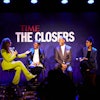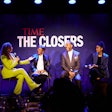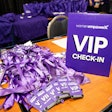
Companies may find themselves turning to webinars during the COVID-19 pandemic to host meetings, education seminars, product demos, services, etc. The online sessions are a cost-effective approach to discuss a topic in-depth and to educate a large group, and it’s an ideal way to deliver a message while a majority of people are working from home and practicing social distancing.
Connect hosts monthly webinars with industry leaders for #eventprofs to receive their CMP credits, so we know what makes a great webinar. If you or your company is new to the webinar world, or want a refresh on best practices, here are tips:
1. Speaker
You can’t start planning and marketing your webinar until you find a speaker. Maybe you’re hosting an internal webinar for your company, or you’re hosting an external webinar for the public. Either way, you want to find a strong speaker who is an expert on said topic. You also want the speaker to be clear and not monotonous. If you’re planning enough in advance, you can add a panel discussion with two or three other speakers to keep the webinar lively and to avoid a stagnant presentation.
2. Planning
Now that you have a speaker, it’s time to start planning. Work with your speaker to ensure the topic is current for your industry. Once you have a topic, select which day and time work best. Research shows that webinars on Wednesday or Thursday have a high registration rate. The time depends on your location. If you’re on the East Coast, an afternoon webcast at 1 or 2 p.m., is best since people on the West Coast are up and working. If you’re on the West Coast, a midmorning webcast, around 10 or 11 a.m. is ideal for a bicoastal audience.
3. Marketing
Email blasts are one of the best ways to market your webinar. When building the registration page/marketing email, include a brief description of the webinar, learning objectives and the speaker’s bio and headshot. This way, if your audience is unfamiliar with the speaker, they can get to know a little about him or her before the live webcast. A good tip is to start sending out marketing emails three weeks before the webcast. Send another one the week before, and another one the day before to get as many people registered as possible. (Vary the subject lines as well to see if the open rate improves or stays the same.) And don’t forget to promote on social media! Share details on Facebook, Instagram and Twitter to get people talking. You can also have the speaker share the webinar on their social media outlets.
4. Engagement
Before the live day of the webinar, practice, practice, practice! Do a test run with your speaker to ensure everything is working correctly: internet connection, platform, telephone, sounds, webcam, external mic, etc. This way you can fix any kinks that may arise while in rehearsal. During the webinar, incorporate polling questions and short video clips to keep the presentation interactive. It can be easy for your audience to zone out when they can’t see the speaker, so keep the webinar engaging and active with a Q&A section and a chat box so the conversation is continuous. Make sure your presentation deck is visually appealing with bullet points, and include a survey at the end of the webinar to measure how well it did.
5. Post-Webinar Follow Up
Now that the discussion is over, you can start sending out a thank-you email to the attendees. And send out an email with the recording of the webinar to people who couldn’t attend the live webcast. This is also where you’ll review your survey results to adjust your webinar program for the future, and you can send the results to the speaker (questions that pertain to him or her) so they can see the feedback from the audience.



















